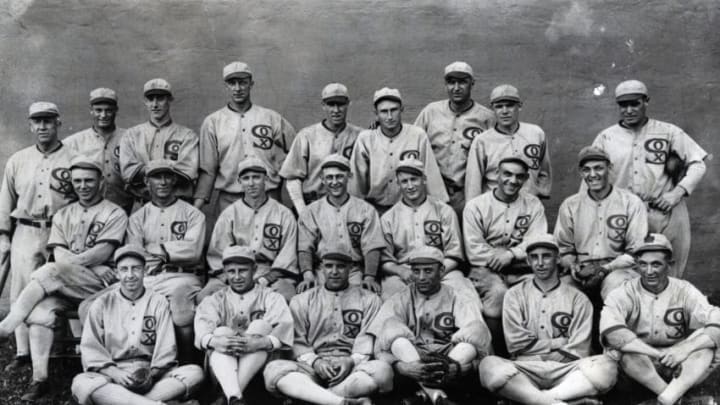
In the centennial season of the worst scandal in MLB and White Sox history, a SABR research panel recalibrates popular public misimpressions about the Black Sox scandal.
In the entirety of MLB and White Sox history, the 1919 Black Sox scandal remains the biggest and best-known stain on baseball’s reputation.
The story of how eight members of the Chicago White Sox – Shoeless Joe Jackson, Eddie Cicotte, Lefty Williams, Chick Gandil, Swede Risberg, Happy Felsch, Buck Weaver and Fred McMullin -conspired with gamblers to fix the 1919 World Series has been detailed in numerous books, both fictional and non-fiction. It has also provided the backdrop for several of the best-known baseball-themed movies of all time, including John Sayles’ 1988 “Eight Men Out” and Phil Alden Robinson’s 1989 “Field of Dreams.”
Over the years, however, several mythologies have grown up around the scandal, many of them perpetuated either by print or in film. Now, researchers specializing in the era and affiliated with the Society for American Baseball Research (SABR) have released a new study timed to coincide with the start of the scandal’s centennial season and designed to correct some of the scandal’s most enduring fallacies.
Titled, “Eight Myths Out,” the study can be viewed at the SABR website. The effort was coordinated by Jacob Pomrenke, who chairs the organization’s Black Sox Era committee, and involves work by dozens of researchers, many of whom are published authors of books or papers on the era.
The report is not designed as a comprehensive review of factual errors or misperceptions regarding the scandal, the researchers’ judgment being that would require a more comprehensive study and would engender a morass of debates regarding what truly qualified as a provable myth as opposed to mere suspicion. Rather, they chose to focus on eight of the most incontrovertible misperceptions that also seemed to have gained the strongest foothold in modern media and culture.
Here are the eight myths.
